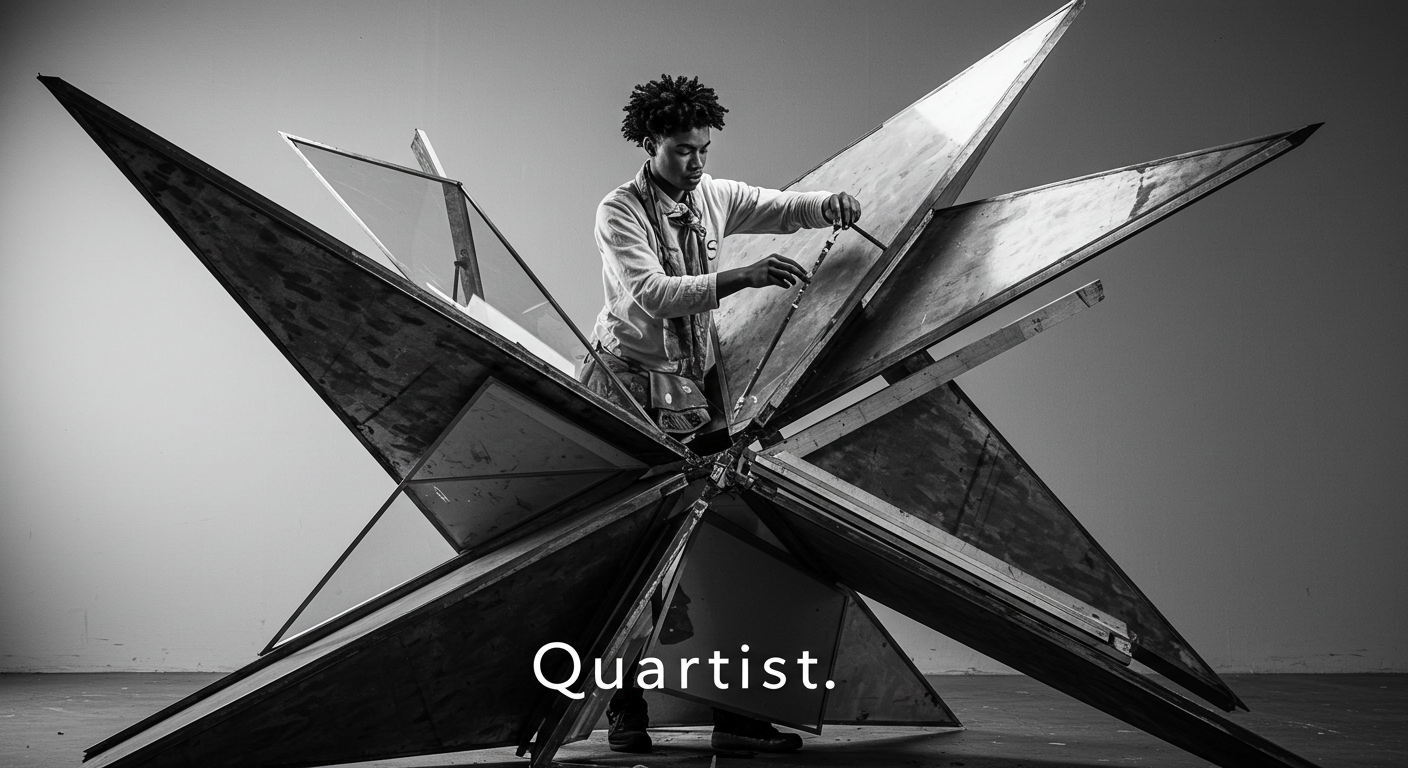In today’s ever-evolving world of creative expression, a new identity has emerged—one that bridges the gap between structure and imagination, logic and emotion. That identity is the quartist. As modern creators search for fresh ways to communicate ideas, the quartist is redefining what it means to be an artist in the digital and conceptual age.
But what exactly is a quartist? How does this title differ from traditional artist labels? And why is this concept gaining attention across visual arts, design, and tech-driven creative fields? In this article, we’ll uncover the meaning of quartist, its origins, its role in innovation, and its lasting impact on how we create and interpret modern art.
Understanding the Meaning of Quartist
At its core, the term quartist describes a creative individual who integrates structure, balance, and conceptual depth into their artistic process. The name appears to stem from the Latin root “quart-” meaning “four,” suggesting symmetry, division, or compartmentalization. For many, being a quartist means creating work that reflects both order and complexity.
Unlike traditional artists who may rely heavily on emotion or abstraction, a quartist often builds their work around calculated design, geometry, and theory—while still embracing creativity and expression.
A quartist might create:
-
Structured visual art using grids or mathematical balance
-
Conceptual installations that follow specific frameworks
-
Interactive digital media that reacts based on user inputs
-
Architectural forms that fuse art with function
The essence of a quartist lies in turning order into beauty.
The Origin and Evolution of the Quartist Concept
Though the term quartist is relatively new and unofficial in mainstream art history, it reflects a real shift in the way creators approach their work in the 21st century. The rise of data, design systems, and digital tools has empowered artists to work more precisely, while also inviting experimentation.
The evolution of the quartist identity can be traced through:
-
The Bauhaus Movement, which emphasized geometric order and utility
-
Minimalist design, where less is more, but every element has purpose
-
Generative art, in which code and algorithms produce visual forms
-
Tech-meets-art collaborations, such as architecture, UI design, or virtual spaces
Today’s quartists often work across disciplines, balancing creativity with logic to build meaningful, layered expressions.
Characteristics That Define a Quartist
If you’ve ever looked at a piece of art and felt it was both mathematically satisfying and emotionally rich, there’s a good chance the creator embraced quartist principles.
Some common traits of a quartist include:
1. Structural Composition
Quartist work often features deliberate layout, symmetry, and visual grids. It may include quadrants, repeated shapes, or evenly spaced patterns that guide the viewer’s eye intentionally.
2. Conceptual Thought
Unlike purely decorative art, a quartist’s work usually communicates deeper meaning. This could be tied to time, emotion, social commentary, or philosophical ideas—often expressed through calculated design.
3. Cross-Disciplinary Techniques
Many quartists experiment with mediums. They might combine digital animation, code, physical materials, or spatial design into unified experiences.
4. Calculated Color and Space
Nothing in a quartist’s work is random. From color selection to spacing, every decision is intentional and contributes to the message of the piece.
The Rise of Quartist Culture in the Digital Age
As society becomes more data-driven and visual storytelling takes center stage, quartist-style thinking is becoming increasingly relevant. In digital environments especially, artists are expected to blend usability with creativity, logic with inspiration.
In UX and UI Design
Quartist logic is often applied to layout and user experience. Designers use structure, spacing, and interaction patterns that are visually pleasing and functionally effective—aligning perfectly with quartist methodology.
In NFT and Digital Art
Many NFT platforms showcase generative or algorithmic art that reflects structure and variation. Here, quartists thrive by producing works that change based on code, environment, or audience interaction.
In Architecture and Environmental Design
Quartist thinking can also be seen in buildings, city planning, and public installations that marry artistic form with scientific function.
Famous Examples of Quartist Influence
While many creators do not explicitly label themselves as quartists, their work fits this category.
-
Sol LeWitt: Known for his wall drawings and minimal structures, using logic-based forms to create emotionless, yet captivating art.
-
Refik Anadol: Uses artificial intelligence and data to create immersive digital installations—beautifully organized chaos.
-
Daniel Libeskind: An architect whose bold yet symmetrical designs blend narrative, history, and geometry.
Each of these figures demonstrates how art can be deeply conceptual while still grounded in logic and form—a perfect reflection of the quartist mindset.
Becoming a Quartist: A Creative Path Forward
If you’re interested in exploring this approach, becoming a quartist doesn’t require formal training. It’s more about how you think and create.
Here are ways to begin:
-
Start with structure: Use a grid or template to design a piece of art. Then build around it.
-
Explore minimalism: Try to convey complex ideas using few elements.
-
Mix mediums: Combine traditional and digital tools to express layered concepts.
-
Use coding in art: Explore platforms like Processing or p5.js to create generative visuals.
-
Be intentional: Every line, space, and color should have meaning.
By adopting these principles, you start creating not just with emotion—but with depth and design.
Why the Quartist Matters in Modern Creativity
In an age of constant content and rapid visual consumption, quartists offer a refreshing approach—one that slows us down and makes us think. They bring precision to emotion, calm to chaos, and structure to storytelling.
Their work often stands out because it’s not just meant to be beautiful—it’s meant to be understood, analyzed, and experienced in layers.
As more artists and designers begin blending disciplines and crafting intentional, logic-based work, the quartist will continue rising as a new standard in modern artistry.
Conclusion: The Quartist Is Here to Stay
The idea of the is more than a label—it’s a creative identity built on balance, innovation, and clarity. It embraces the tools of the modern world while honoring the artistic soul, creating works that are thoughtful, intelligent, and impactful.
Whether you’re a painter, coder, architect, or multimedia designer, you might already be walking the path of a quartist. And as the world becomes more visually complex and digitally connected, this structured yet expressive form of creativity may just define the next era of art.

